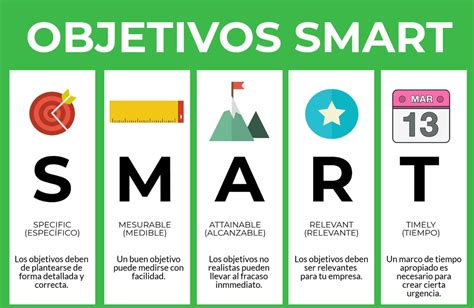Smart recovery tech for faster muscle repair & peak readiness?

The Revolution of Recovery: Why It Matters More Than Ever
For athletes and fitness enthusiasts alike, the pursuit of peak performance isn’t just about training harder; it’s increasingly about recovering smarter. Intense workouts, competitive sports, and demanding physical activities place significant stress on the body, leading to muscle damage, inflammation, and fatigue. Traditionally, recovery relied on rest, nutrition, and basic methods like stretching or ice baths. While these fundamentals remain crucial, a new wave of smart recovery technology is now offering sophisticated, data-driven solutions to accelerate muscle repair and optimize readiness.
These innovative devices and systems move beyond passive recovery, actively assisting the body’s natural restorative processes. By leveraging advancements in biometrics, biofeedback, and mechanical therapies, smart recovery tech promises to shorten downtime, reduce the risk of injury, and ensure you’re always ready to perform at your best.

Key Smart Recovery Technologies Redefining Muscle Repair
The market is now brimming with a diverse array of intelligent tools, each designed to target specific aspects of the recovery process:
Wearable Biometric Trackers & Analytics
Modern wearables go far beyond step counting. Devices that monitor heart rate variability (HRV), sleep patterns (REM, deep sleep cycles), skin temperature, and activity levels provide invaluable insights into your body’s recovery status. Low HRV, poor sleep quality, or elevated resting heart rate can signal insufficient recovery, prompting adjustments to training or recovery protocols. AI-powered platforms can even process this data to offer personalized recovery recommendations.

Percussive Therapy Devices
Popularly known as ‘massage guns,’ these handheld devices deliver rapid, repetitive strokes to muscle tissue. This percussive action helps to increase blood flow, break up muscle knots, reduce lactic acid buildup, and improve range of motion. By targeting specific muscle groups, they can alleviate post-workout soreness (DOMS) and accelerate muscle regeneration.
Dynamic Compression Systems
Systems like pneumatic compression boots use air pressure to sequentially compress and release various parts of the limbs. This ‘active’ compression mimics natural muscle contractions, promoting lymphatic drainage to remove metabolic waste products and increase circulation, delivering fresh, oxygenated blood and nutrients to tired muscles. The result is reduced swelling, faster recovery, and a refreshed feeling in the legs.

Electrical Muscle Stimulation (EMS) & TENS Units
EMS devices use electrical impulses to contract and relax muscles, which can aid in recovery by improving blood flow, preventing atrophy, and re-educating muscles after injury. TENS (Transcutaneous Electrical Nerve Stimulation) units, on the other hand, primarily focus on pain relief by blocking pain signals and stimulating endorphin release, allowing for more comfortable recovery.
Localized Cryotherapy & Thermotherapy Devices
While full-body cryotherapy gained popularity, localized devices offer targeted cold therapy to reduce inflammation and numb sore areas. Conversely, smart heating pads and devices can deliver controlled warmth to improve blood flow, relax stiff muscles, and alleviate discomfort, making them ideal for pre-workout preparation or post-injury recovery.

The Science Behind Faster Repair and Peak Readiness
These technologies don’t just feel good; they work by influencing physiological processes crucial for recovery:
- Reduced Inflammation: Many devices, particularly cryotherapy and compression, help mitigate the inflammatory response that follows intense exercise.
- Improved Blood Flow and Nutrient Delivery: Percussive therapy, compression, and EMS all enhance circulation, ensuring that muscles receive essential oxygen and nutrients for repair while facilitating the removal of waste products.
- Accelerated Waste Removal: Dynamic compression is particularly effective at stimulating the lymphatic system to flush out metabolic byproducts like lactic acid, which contribute to soreness and fatigue.
- Enhanced Neuromuscular Function: By relieving muscle tension and improving range of motion, these tools help restore proper muscle function and reduce muscle stiffness.
- Objective Data for Informed Decisions: Wearables provide quantifiable metrics, transforming recovery from a subjective feeling into a data-driven strategy.
Integrating Smart Tech for Optimal Performance
The true power of smart recovery tech lies in its integration into a holistic training and wellness regimen. By understanding your body’s unique recovery needs through data, and applying targeted therapies, you can fine-tune your approach to training. This leads to reduced instances of overtraining, quicker bounce-back from strenuous sessions, and a more consistent ability to perform at your highest level. It’s about working with your body, not against it, to unlock continuous improvement and sustained peak readiness.

Conclusion: The Future of Recovery is Now
Smart recovery technology is no longer a niche for elite athletes; it’s becoming an accessible and essential component for anyone serious about their physical health and performance. From wearables that track your readiness to devices that actively repair your muscles, these innovations are fundamentally changing how we approach post-exercise care. As the technology continues to evolve, offering even greater personalization and integration, the future promises even faster muscle repair, enhanced injury prevention, and an unprecedented ability to maintain peak physical readiness for whatever challenges lie ahead.








